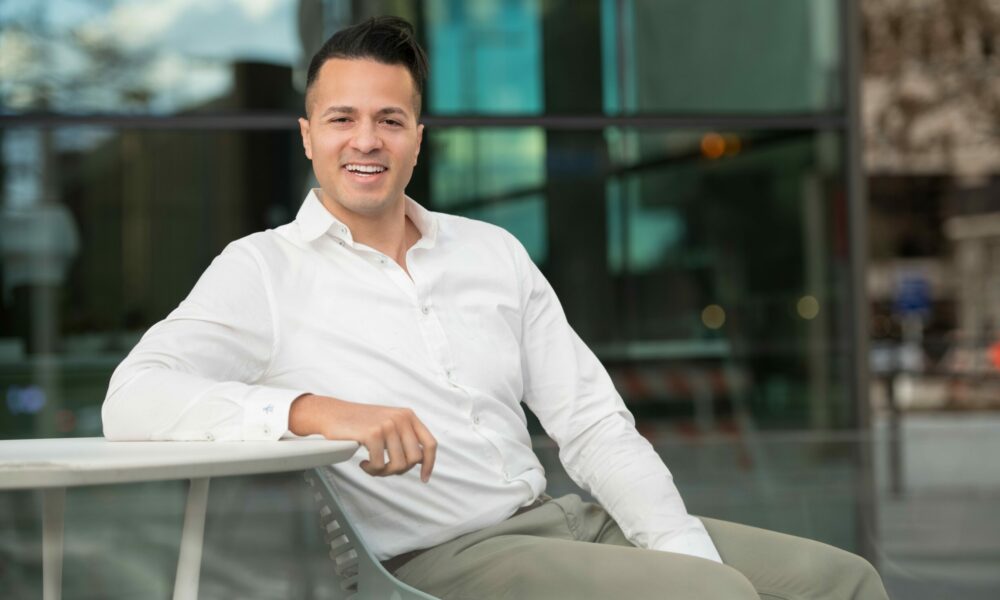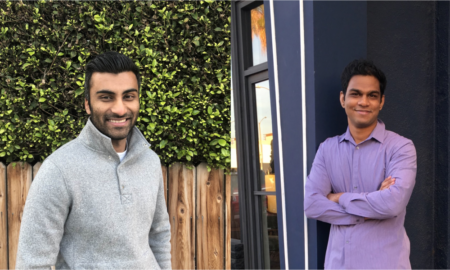

Today we’d like to introduce you to Joe Cannon.
Joe, we appreciate you taking the time to share your story with us today. Where does your story begin?
As a young boy, I quickly identified my love for design through crafting miniature models from balsa wood, drawing maps of imaginary cities, and wondering how roads, buildings, and people were related to each other. It was in the fourth grade when I was introduced to the concept of what an architect was and knew then that would be my life’s work. At the start of the 7th grade, my mother and I relocated from our home in the Washington D.C suburbs to the heart of Dallas, Texas. I was absolutely fascinated with living in downtown Dallas where the urban environment had so many architecturally renowned buildings all within walking distance. I continued designing and modeling buildings and cities throughout my middle school years at A.W Spence TAG Academy until it came time for me to transition into high school. By already knowing my career path, there was absolutely no question when I selected the Architecture cluster at Skyline Magnet-Career Development Center, a place where I would be educated by architects and advance my knowledge of the profession. It was through being a student at Skyline that I was recognized by the Dean of Architecture from Syracuse University, one of the highest-ranked undergraduate architecture programs in the country and accepted to this program on a full-tuition scholarship.
One of the most important things I learned as a student at Syracuse School of Architecture is that architects can shape the built environment to be conducive for people to engage with each other. Furthermore, I learned how to connect my interests in public policy and design within the concept of ‘Citizen architect,’ an architect who plays an active civic role in their communities by advocating for smart design and policy that would improve the quality of life. Throughout my education, I was able to see the world through the lens of not only designing buildings and preserving the environment but also building lives through bettering local communities. After graduation, I returned home to Dallas to start my career and become a licensed architect.
Shortly after achieving licensure in 2014, I seized a series of amazing opportunities over the span of five years that brought me to live in the cities of San Francisco, Los Angeles, Seattle, and Melbourne, Australia. By living in these cities, I was able to immerse myself in learning what was being doing right (and wrong) regarding their quality of life provisions. Although I treasured each of my experiences in the places, I had a growing desire to bring the best elements of these places back to my home city of Dallas. After my stint in Melbourne, Australia, I returned to the U.S and quickly purchased my residence in the East Village neighborhood, which coincidentally is one block away from where I attended middle school at A.W. Spence TAG Academy.
Being back home in Dallas at the start of the COVID-19 pandemic allowed me to spend a great deal of time walking through mine and adjacent neighborhoods. I was impressed on how Dallas has enhanced its walkability but could still see vast room for improvement. During my walks, I also observed my neighborhood undergoing a major transitional period where a new generation of residents, both homeowners and renters, are moving in and changing the characteristics of the East Village community. With my desire to foster community and my professional experience as an architect who can visualize a better functioning built environment and execute through collaboration, I knew that this area needed an official neighborhood association to bring people together and advocate for the future of this neighborhood- thus the vision to launch the Neighbors of East Village was born in the fall of 2020.
Can you talk to us a bit about the challenges and lessons you’ve learned along the way. Looking back would you say it’s been easy or smooth in retrospect?
In looking back on my life, I can’t say that it has been an easy journey. Growing up as the only child to a single parent in the 1990s carried a stigma to it, one supported by statistics that children of single parents are likely to fare worse on average in every category from education to health than their two-parent household counterparts. Yes, there were struggles growing up in a ‘non-traditional’ family, but this challenged me to achieve above all else and not become a statistic.
In university, I was awarded a full-tuition scholarship; however, had to maintain an average GPA to keep that scholarship. Ensuring I had the grades to stay in one of the top architecture programs was tough at times but taught me how to search for resources that were readily available at school to make it past the finish line and graduate as a Class Marshal. These struggles helped prepare me for leadership roles, including my role as founder and president of the Neighbors of East Village. Often feeling like an ‘outsider’ growing up, I intentionally build inclusivity to make sure that all who want to be included and heard can contribute to a group or cause. Starting a neighborhood association during a pandemic presented logistical issues such as having those one-on-one conversations with residents. In addition to organizing a community behind this new neighborhood association, there were a few outliers in the neighborhood that were skeptical of this endeavor, but this pushback only fueled my drive to see the fruition of the neighborhood association.
Thanks for sharing that. So, maybe next you can tell us a bit more about your organization?
The Neighbors of East Village is a neighborhood association that serves the residents and businesses of Dallas’ East Village (defined by the boundaries of Ross Ave, Haskell Ave, Fitzhugh Ave, and Central Expressway). Our organization’s mission is to provide an inclusive forum for ideas that work towards improving the quality of life and connecting residents through advocacy, social events, and community involvement. We are recognized by the City of Dallas as an official neighborhood association and an incorporated non-profit in the State of Texas. East Village is amid a development boom which brings about benefits and challenges as with any neighborhood or city experiencing new growth. In recent years, East Village has undergone “densification”- a term more known to designers and urban planners, which simply describes the increasing density of people living in an urban area (Example: A parcel of land which previously was occupied by 1 household is now occupied by up to 5 households). With densification and the fact that the demographics of this community is changing, there is a substantial need to have a neighborhood association to guide that growth in a responsible manner while bringing both new and existing residents together to ensure all voices are heard.
What do you do, what do you specialize in, / what are you known for?
Professionally, I am a licensed architect and project manager. In the span of my career, I’ve specialized in project management at some of our country’s largest airport renovation programs, such as Los Angeles and Seattle-Tacoma. Apart from my day job, I am proud being a citizen architect who is building a reputation in improving the quality of life for my fellow Dallas residents. My involvement in the Dallas community has brought me to serving on the Board of Directors for CityLab High School Foundation, volunteering for local and federal political campaigns, and now as the founder and President of Dallas’ newest neighborhood association, Neighbors of East Village.
What sets you apart from others?
What defines me from others is the expertise I bring to public service. My background in design and project management gives me the knowledge of the latest trends on how to improve the built environment from pedestrian-friendly streets, to scale of development, zoning, managing people, and getting things done on time. I’ve applied this expertise to executive producing the award-winning American Institute of Architect (AIA) short film on Dallas’ CityLab High School and continue to bring this expertise in media, design, and management to create what can be the new model for how neighborhood associations are created and operated here in Dallas.
What do you want our readers to know about your offerings, services, etc.?
The Neighbors of East Village is focused on establishing itself as a trusted organization within the community and the city at large. Within our first quarter of operations, we have hosted events from meet and greet to bringing guest speakers such as The Trust for Public Land and De La Vega Development to speak on projects that are coming soon to our community. We will continue to offer a venue for members to be informed and collaborate with each other and entities who play a role in the re-development of East Village. Our philosophy is to empower others to lead, so those who want to be part of this organization will have the tools to succeed. Thus we all succeed.
Where we are in life is often partly because of others. Who/what else deserves credit for how your story turned out?
My life would not be what it is today without the guidance and support of those closest to me. I would be remiss if I did acknowledge my mother, Wini Cannon, for being my number one supporter and advisor who’s encouraged me to push on and achieve immeasurable heights in life, even at times when I did not believe in myself. As an attorney, she always brings an analytical perspective to an idea and helps me to strategically plan and creatively discover how anything can be done and was a wealth of information when launching the Neighbors of East Village. I must also recognize my high school architecture teachers from Skyline, Peter Goldstein and Tom Cox, who taught me to follow my dream of becoming an architect and gave me the strong foundation to carry on towards licensure and shown me throughout the years the worth of collaborating with other for the greater good, especially within our Dallas community.
Specifically, for the neighborhood association, I would credit Mike Luckock, Jonathan Tate, and Roberto Alonsoca for being huge advocates of this new neighborhood association and moral support for me. As our Steering Committee members, these gentlemen were able to see the vision that I had for our neighborhood and helped guide it to fruition within 90 days, a truly remarkable feat. Today, our organization is fortunate to have supporters such as Marysia Laskowski, Rainer Claussen, and Monica Daniec as our inaugural elected officeholders of Vice President, Treasurer, and Secretary, respectively. Each of these ladies brings a valued perspective of how to include more neighbors into the association and find out their needs. It’s amazing to see how people who likely would not come together in day-to-day life are able to bond over the common good of progressing their neighborhood.
Contact Info:
- Email: info@neighborsofeastvillage.org
- Website: www.neighborsofeastvillage.org
- Instagram: https://www.instagram.com/neighborsofeastvillage/
- Facebook: https://www.facebook.com/NeighborsEastVillageDallas
















